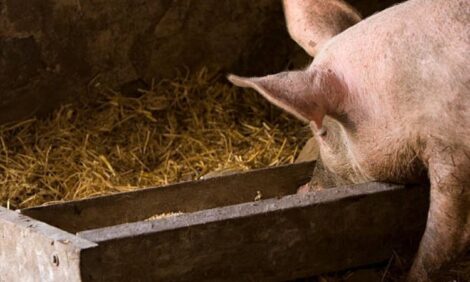



Perspectives on euthanasia and depopulation
Elimination protocols must be in place prior to pathogen introductionTwo presentations at the 2022 Leman conference highlighted emerging trends in depopulation protocols.
Andrew Bowman, Ohio State University, noted that the United States’ swine industry is under constant threat of foreign animal diseases, due to the globalized transportation networks moving people, pigs, and products.
Therefore, having disease control and elimination protocols in place prior to pathogen introduction is paramount for business continuity and economic recovery, he said. During extraordinary circumstances, it may become necessary to depopulate large populations of swine as a disease containment measure, he added.
Unlike euthanasia where the goal is to minimize or eliminate pain and distress during death, the goal of mass depopulation is the emergency destruction of animals. While the methods used to achieve this depopulation goal must induce a rapid loss of consciousness or brain function, animal welfare is only one of many important considerations, Bowman noted.
Currently approved depopulation methods for swine present significant logistical challenges when scaled to large populations or performed in field conditions, he said. In the US, water-based foam (WBF) is currently approved for poultry depopulation, and several recent field studies demonstrate WBF is an effective depopulation method for swine.
In a small-scale trial of group-applied depopulation methods, done by Bowman and colleagues at Ohio State, WBF demonstrated the highest efficiency to induce cessation of movement for cull sows (186.0 seconds ± 48 seconds), which was comparable to carbon dioxide gas (202.0 seconds ± 41 seconds), he said.
A 5-minute dwell time resulted in irreversible loss of consciousness and subsequent mortality in nursery pigs and cull sows, which is supported by electroencephalographic data in grower pigs that demonstrates the average time to unconsciousness and brain death with water-based foam was 98 s (±34 seconds) and 168 s (±61 seconds), respectively, Bowman noted.
The rapid loss of consciousness induced by water-based foam limits the amount of distress and is an overall positive finding for the welfare of the pigs that might be depopulated with water-based foam, he concluded.
European depopulation technology
To effectively contain a high-consequence disease, all farms should have emergency plans, ideally incorporating equipment and practices already in use on-farm. The practices used on farms to raise animals for food, whether during a crisis or in routine production, must be inherently safe to protect animal well-being, welfare, and public health, said Marie Culhane of the University of Minnesota.
Anoxia via exposure to nitrogen gas-filled high-expansion foam can be introduced into US pork, turkey, and dairy production farms not only as a humane euthanasia method for use on-farm but also scaled up for mass depopulation, she said.
The method was first developed in 2005 to stun pigs prior to slaughter and then continuously upgraded via projects in Sweden, the Netherlands, and Germany. Now it is performed using a dry, transparent, high-expansion foam comprised of large-diameter-sized bubbles, Culhane noted.
In addition to scalability, this technology offers possible advantages over other methods like ease and safety of use, she said. For example, a disinfectant can be added to the foam to reduce microbial contamination of the carcasses and containers, she added.
The method uses few people and, because it is entirely contained, provides the necessary separation of the caretakers from the animals and the people from the carcasses, providing dual benefits for both mental and physical health, Culhane explained.
Approved for use in several European countries, the high expansion nitrogen foam method is an excellent example of an existing technology that can be adapted to US farms and then built upon to meet the needs of American agriculture during routine production and in emergencies, she said.
Adapting high expansion nitrogen foam for use in American systems for mass depopulation and as a euthanasia method for on-farm culling will require acceptance by professional organizations, regulatory agencies, farmers, and meat consumers, Culhane concluded.









